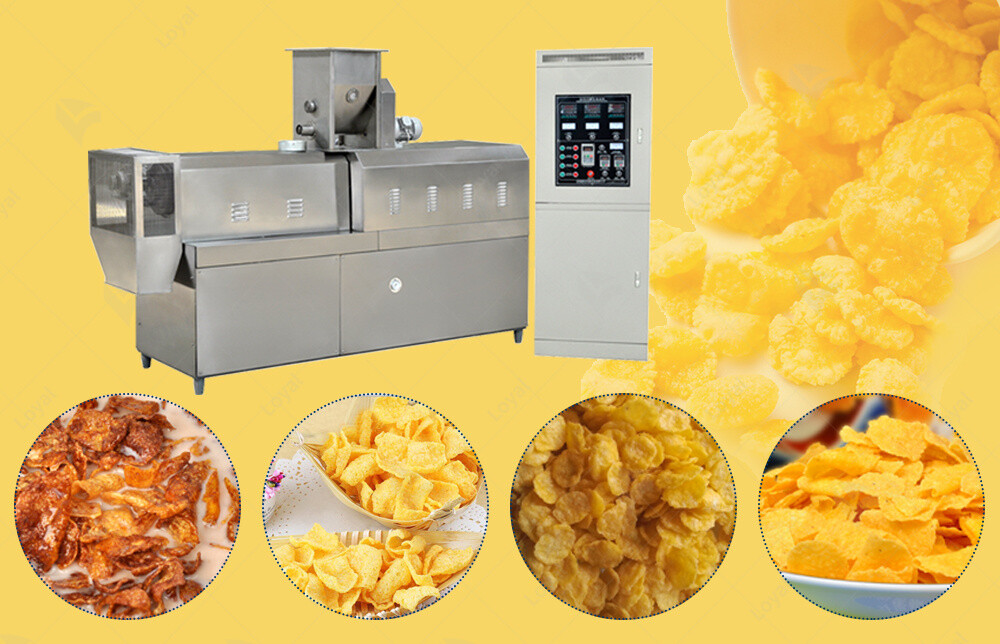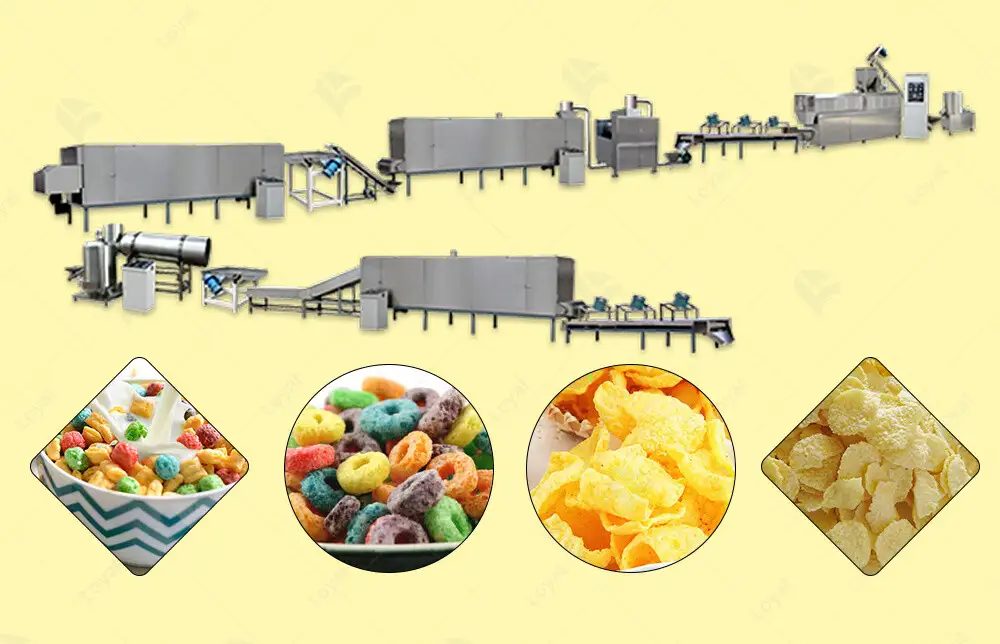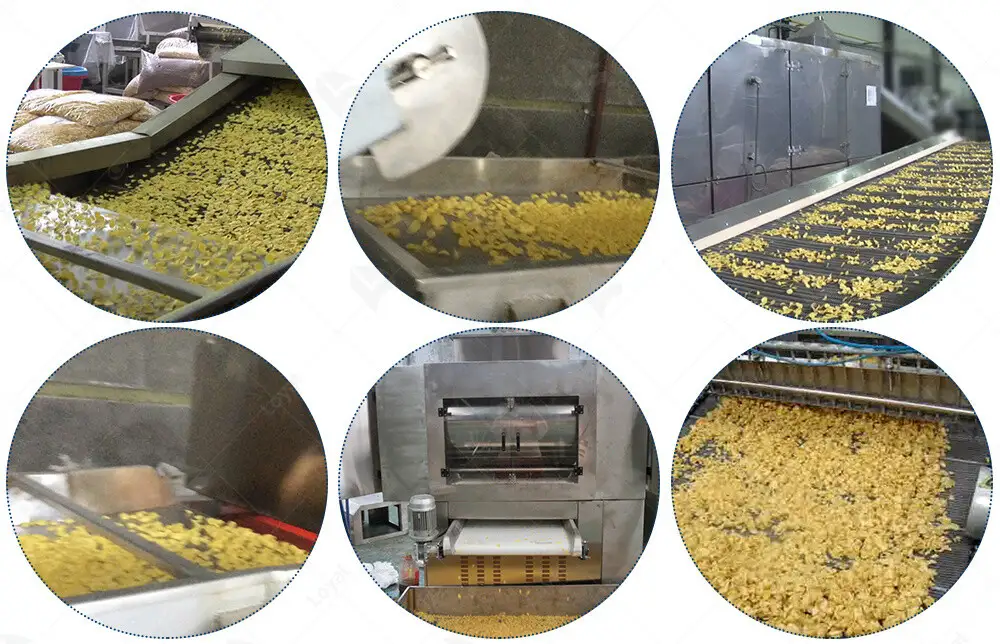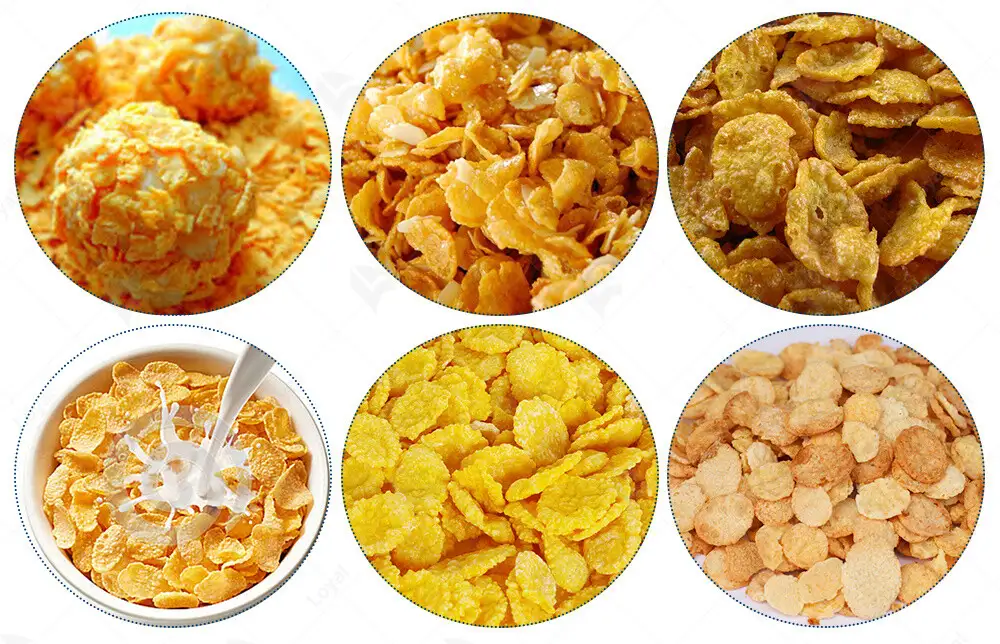Everything You Need To Know About Cereal Puffing Machine
Introduction
In the dynamic realm of food processing, the Cereal Puffing Machine stands as a crucial piece of equipment. It has revolutionized the production of a wide range of puffed cereal products that are not only popular among consumers but also a staple in the food industry. This machine plays a pivotal role in transforming raw cereal materials into the light, crispy, and delicious puffed cereals we enjoy in our daily breakfasts or as snacks.
The application of the Cereal Puffing Machine spans across various segments of the food industry. From large - scale commercial food manufacturers to small - scale artisanal producers, its versatility makes it an essential tool. It can handle different types of cereals such as corn, rice, wheat, and oats, creating a diverse array of puffed products that cater to different tastes and market demands.

Advances and Innovations in cereal puffing machine Technology
1. Precision Control Systems
Modern cereal puffing machines are equipped with highly precise control systems. These systems, often based on advanced PLC (Programmable Logic Controller) technology, enable operators to set and maintain exact parameters for the puffing process. For instance, the temperature can be regulated within a very narrow range, which is crucial as different cereals require specific temperature conditions to achieve the perfect puff. This precision not only improves the quality of the puffed cereals but also reduces product waste.
2. Material - Feeding Innovations
New - generation cereal puffing machines feature improved material - feeding mechanisms. They are designed to handle a variety of cereal raw materials with different textures and moisture contents more effectively. Some machines come with automatic weighing and proportioning systems for the raw materials. This ensures that the correct amount of each ingredient is fed into the machine, which is essential for consistent product quality.
3. Energy - Saving Technologies
In response to the growing demand for energy - efficient food processing, cereal puffing machines now incorporate several energy - saving features. High - efficiency heating elements are used to minimize energy consumption during the heating process. Additionally, some models have heat - recovery systems that capture and reuse the wasted heat, further reducing the overall energy footprint of the machine.
4. Hygiene - Enhanced Design
Hygiene is a top priority in food processing. The latest cereal puffing machines are designed with smooth, easy - to - clean surfaces and removable parts. This allows for thorough cleaning and sanitization between production runs, reducing the risk of cross - contamination and ensuring that the puffed cereals meet the highest food safety standards.

Main Features and Benefits of Using cereal puffing machine
| Main Features | Benefits |
| High - productivity design | Capable of processing large volumes of cereal raw materials in a short time, which increases production efficiency and meets market demands for puffed cereal products. |
| Adjustable puffing degree | Operators can modify the machine settings to achieve different levels of puffing, allowing for the production of a diverse range of puffed cereals with varying textures and appearances, such as light and crispy or denser puffs. |
| Compatibility with multiple cereals | The Cereal Puffing Machine can handle various types of cereals like wheat, corn, rice, etc. This versatility enables food manufacturers to explore different product lines and expand their market offerings. |
| Compact structure | Occupies less floor space in the production plant, which is beneficial for small - to - medium - sized food processing enterprises with limited space. It also facilitates easy installation and relocation within the factory. |
| Low - maintenance requirements | Constructed with durable materials and simple mechanical structures in some key components. This reduces the frequency of maintenance and associated costs, ensuring continuous production with minimal downtime. |
Types of cereal puffing machine
| Type | Description | Application Scenarios |
| Extrusion - type Cereal Puffing Machine | Utilizes screw extrusion technology. It forces the cereal mixture through a die under high pressure and temperature, causing the moisture in the cereal to rapidly vaporize and expand, thus puffing the cereal. This type offers high - speed production and precise control over the shape and texture of the puffed products. | Ideal for large - scale industrial production of a wide range of puffed cereals, such as breakfast cereals with various shapes like rings, stars, etc., due to its high - productivity and flexibility in product shaping. |
| Pneumatic Cereal Puffing Machine | Operates by using high - pressure air to puff the cereals. The cereals are placed in a chamber, and a sudden release of high - pressure air expands the grains, achieving the puffing effect. It is relatively simple in structure. | Suited for small - scale production or artisanal food processing. It can be used to produce traditional puffed snacks in a more cost - effective way for local markets or small - batch, high - quality product lines. |
| Rotary - type Cereal Puffing Machine | Features a rotating drum or chamber where the cereals are heated and tumbled. As the temperature rises, the cereals puff up. This type provides a gentle puffing process. | Appropriate for producing puffed cereals that require a more uniform and less - aggressive puffing, like certain types of granola - based puffed products where maintaining the integrity of the cereal clusters is important. |

Choosing the Right cereal puffing machine for Your Business
When choosing the right Cereal Puffing Machine for your business, several key factors need to be considered.
Production Capacity
First and foremost, assess your production volume requirements. If you have a large - scale operation with high - volume demands, an extrusion - type Cereal Puffing Machine is likely your best bet. Its high - speed production capabilities can meet large - scale production needs efficiently. However, for small - scale production or start - up businesses with limited output requirements, a pneumatic or rotary - type machine might be more suitable as they are more cost - effective for lower production volumes.
Product Type
The type of puffed cereal products you plan to manufacture also plays a crucial role. For a diverse range of shaped breakfast cereals, the extrusion - type machine's ability to precisely control product shape and texture is indispensable. On the other hand, if you're focused on traditional puffed snacks or granola - based puffed products, a pneumatic or rotary - type machine, with their unique puffing processes, can better meet the specific quality requirements of these products.
Budget Constraints
Your budget is another important consideration. Extrusion - type machines, with their advanced technology and high - speed production features, tend to be more expensive. Pneumatic and rotary - type machines are generally more budget - friendly, making them an attractive option for businesses with limited capital. But remember, while cost is important, don't sacrifice quality and long - term productivity for a lower - priced machine. Consider the total cost of ownership, including maintenance and operating costs over the machine's lifespan.

Challenges and Solutions of Adopting cereal puffing machine
I. Initial Investment and Cost - effectiveness
One of the primary challenges businesses face when adopting a Cereal Puffing Machine is the high initial investment, especially for advanced extrusion - type models. These machines, equipped with state - of - the - art technology, come with a hefty price tag. For small - and medium - sized enterprises (SMEs), this can be a significant financial burden.
Solution: Consider a phased investment approach. Start with a basic - model Cereal Puffing Machine that meets your immediate production needs. As your business grows and revenue increases, you can upgrade to a more advanced, high - capacity model. Additionally, explore leasing options. Many equipment suppliers offer leasing programs, which can significantly reduce the upfront capital requirement while still allowing you to access the necessary technology.
II. Technical Expertise and Maintenance
Operating and maintaining a Cereal Puffing Machine requires a certain level of technical knowledge. Malfunctions, such as blockages in the extrusion system or issues with the heating elements, can disrupt production. Finding skilled technicians who are familiar with the specific brand and model of the machine can also be a challenge.
Solution: Provide comprehensive training to your in - house staff. Many manufacturers offer training programs for their equipment, covering both operation and basic maintenance. You can also establish a service contract with the equipment supplier or a third - party maintenance provider. They can offer regular maintenance checks, quick response times in case of breakdowns, and access to genuine spare parts.
III. Quality Control and Consistency
Ensuring consistent quality in puffed cereal products can be difficult. Fluctuations in raw material quality, improper machine settings, or variations in the production environment can all affect the final product's taste, texture, and appearance.
Solution: Implement a strict quality control system. Regularly test the raw materials for moisture content, particle size, and other relevant parameters. Use sensors and monitoring devices in the Cereal Puffing Machine to continuously track and adjust critical process parameters such as temperature, pressure, and speed. Conduct regular product sampling and sensory evaluations to promptly identify and address any quality issues.

Conclusion
In conclusion, the Cereal Puffing Machine is an indispensable asset in the food processing industry. Despite the challenges it presents, such as high initial investment, the need for technical expertise, and quality control issues, the solutions available - like phased investment, training, and strict quality management - can effectively mitigate these concerns. As technology continues to advance, we can expect even more efficient and user - friendly cereal puffing machines. By embracing this technology and implementing the right strategies, food manufacturers can enhance their production efficiency, product quality, and ultimately, their competitiveness in the global market.

Reference
Here are five authoritative foreign websites related to industrial food machinery, along with their URLs:
1.ThomasNet
Website: https://www.thomasnet.com
2.MachineryTrader
Website: https://www.machinerytrader.com
3.Food Engineering:https://www.foodengineeringmag.com
4.Pack Expo:https://www.packexpo.com
5.DirectIndustry:https://www.directindustry.com












